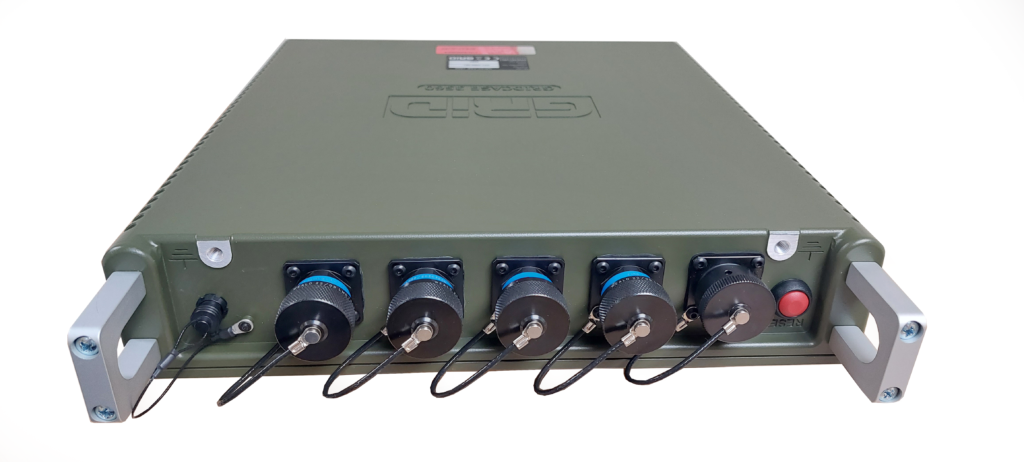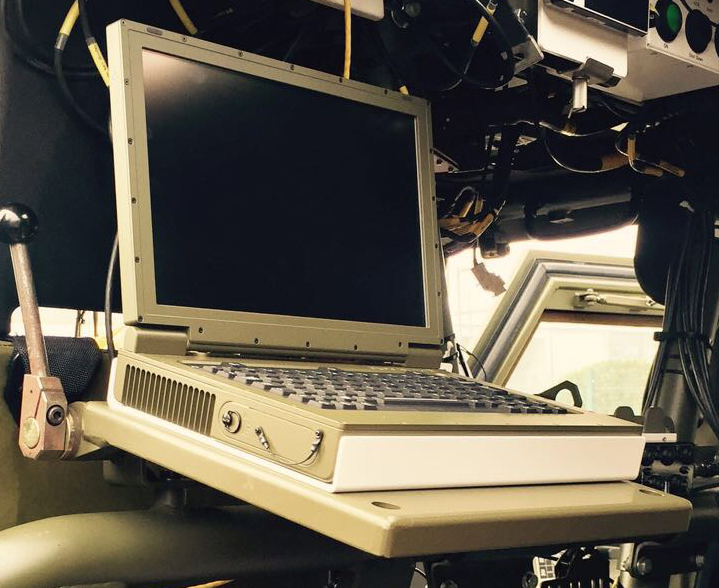Updating the electronics on in-service military vehicles can be a costly and complex endeavour, particularly when it comes to the platform’s computer systems. Replacing integrated displays and computers over a vehicle’s lifetime is however essential for managing obsolescence and upgrading the platform’s capabilities as systems and threats evolve on the battlefield. So how can land forces ease the integration of new vehicle computers and electronics and avoid costly delays?
Defence procurement is no easy job, and we understand that very well at GRiD. Those responsible for purchasing new military equipment face a myriad of challenges and have various considerations to weigh up in this complex space. From technical requirements to the ever-evolving threat environment, as well as all-important budgets and cost, the various factors that go into defence programmes are significant and require specialist knowledge from within government, industry and the armed forces.
These challenges are ever present across all military domains and GRiD has experience of supplying computer systems for a range of platforms. One particular area that is important for GRiD is the land domain where there is an ongoing need to upgrade land platforms – especially legacy platforms with older systems – to ensure that they can meet the increasingly complex needs of the modern battlefield. No longer are vehicles just armour and wheels (or tracks) and a weapon system, they need to be mini data centres driven by modern computer systems.
New upgrade programmes
If we wanted new electronic features for our car – such as camera systems, new sensors, and driver aids – the best thing to do would be to buy a brand-new car and trade in the old one. Unfortunately for most land forces, even in countries with healthy defence budgets, trading in a whole fleet of armoured vehicles for a new one just isn’t possible as the costs would be simply eye-watering, particularly for more complex fighting platforms (e.g. MBTs and IFVs).
The common solution is to upgrade land platforms and manage obsolescence so that their service life can be extended and emerging threats can be addressed. While this may not equate to the capabilities of a brand-new vehicle, the end result will be an upgraded platform that is still fit for purpose and provides a capable combat role at a reduced cost of complete fleet renewal.
This approach can be seen across many NATO nations’ vehicle fleets, with decades-old platforms going through a series of upgrades to retain their combat potency. Potentially one of the most well-known is the Leopard 2 main battle tank, which has gone through several iterations from its initial ‘A1’ design in the 1970s. The latest ‘A8’ variant features a host of advanced systems that ensure the 70s-era platform remains relevant for the modern combat environment and meets a host of new threats.
The US Army has also followed this approach with its M1 Abrams MBT and Bradley IFV, with both platforms going through iterative upgrade programmes to ensure the 1980s-designed platforms are still capable in the 21st century.
Challenges to vehicle upgrades
Military vehicles are complex pieces of engineering that are designed to operate in extreme environments, usually with enemy forces that want to blow them up! This complexity is not just in the vehicle build itself, but also its internal computer systems and electronics, which are now just as integral to the vehicle’s capability as the bullet-proof armour that surrounds it. Modern combat vehicles can have millions of lines of code that underpin their combat systems.
Land vehicles are also very limited in terms of the available space envelope that systems can occupy, the power required, and the weight they add (often known as size, weight and power, or SWaP). Newer systems should not add to the SWaP burden, which could ultimately degrade capability rather than add to it. Newer systems must also conform to very strict military environmental and EMC standards and qualifications, which again can add quite significantly to programme demands.
Read more: Electronic noise: why EMC compliance is critical for military computers
As some vehicle upgrade programmes have demonstrated, vehicle upgrades can become complex and costly, and the money spent ultimately could have been invested in brand-new vehicles instead. There have even been high-profile cases of vehicle upgrade programmes being cancelled and troops having to resort to using older technology that does not meet modern standards, which has safety and operational implications as well as cost implications for the taxpayer.
It is therefore important for procurement officials and the armed forces to seek upgrade solutions that not only provide a capability uplift for frontline forces but can also be realised without a significant disruption to operational availability, as well as a cost burden. Keeping costs affordable while also introducing more advanced technology is always a careful balancing act for defence officials, but it must be made to avoid the costly mistakes of the past.

GRiD’s highly flexible engineering approach
GRiD provides rugged computer solutions for platforms across domains and across their service life, whether they are brand-new capabilities straight off the production line or older platforms being updated as part of mid-life upgrades. This inherent flexibility and ease of integration across a range of platforms, especially land vehicles, has proven popular with many of our defence customers over our 30-year history.
As a testament to this, GRiD solutions can be seen on armoured vehicles around the world, including the aforementioned Leopard 2 tank.
GRiD’s rugged laptops and tablet displays leverage the very latest in computing technology and, as all our solutions are designed and manufactured in the UK, can be specially designed and manufactured to fit in a specific space envelope and interface with a particular vehicle architecture, including legacy examples. This can include specific power output from the vehicle and associated cabling, as well as specialist connectors and interfaces that have already been qualified and tested to strict military standards.
As an example, GRiD can integrate MIL-DTL-26482 bayonet-lock connectors into its laptops to ensure interoperability with legacy architectures where required. GRiD can also integrate the same connectors and interfaces that aid data transfer, such as ethernet and USB, or upgrade if needed. The use of legacy connectors ensures ease of integration into older vehicle fleets and negates the need for expensive and time-consuming re-wiring of vehicles. This ‘box-on, box-off’ concept has already been proven to be successful with a NATO country’s land forces and is an effective and lower-risk upgrade solution.
Of course, if newer connectors and interfaces were selected, this could be easily integrated by GRiD as well, owing to the flexibility of our engineering approach. As we mentioned above, this is ultimately the decision of the purchasing stakeholders and there are always trade-offs to be made between capability, cost and delivery timeframes.
Conclusion
GRiD is one of the few rugged computer manufacturers that can boast a highly flexible engineering approach that not only brings the best computing technology to the armed forces but can also adapt to the unique and specialist needs of the military. We pride ourselves on our UK-based engineering and providing solutions to complex problems that the armed forces face, helping to future-proof capability while also saving time and money where budgets are often tight.
Looking to upgrade your vehicle’s computer systems and want to ease your integration challenges? Contact us now.
Telephone us on +44 (0)1628 810 230 or drop an email to sales@griduk.com.

